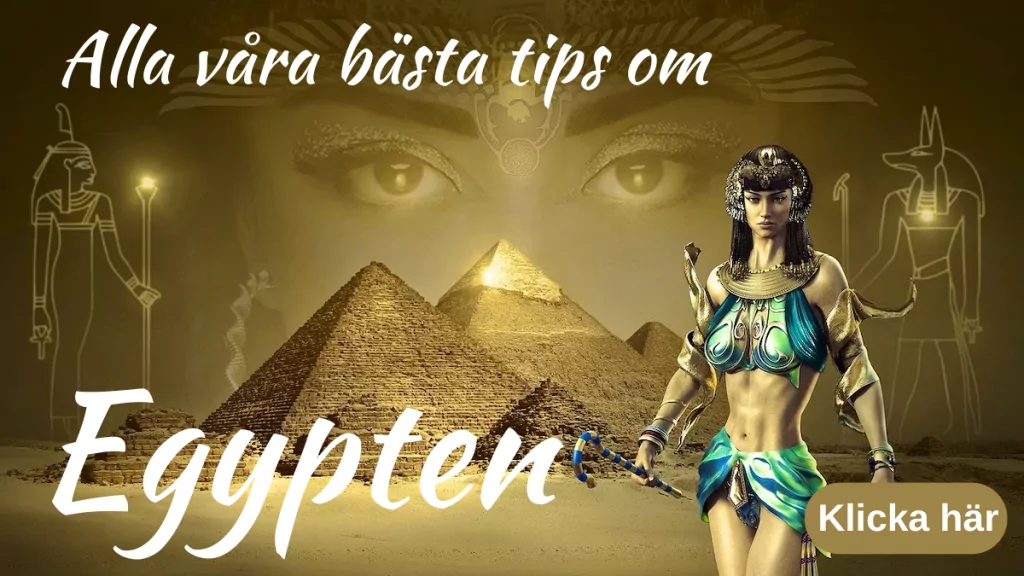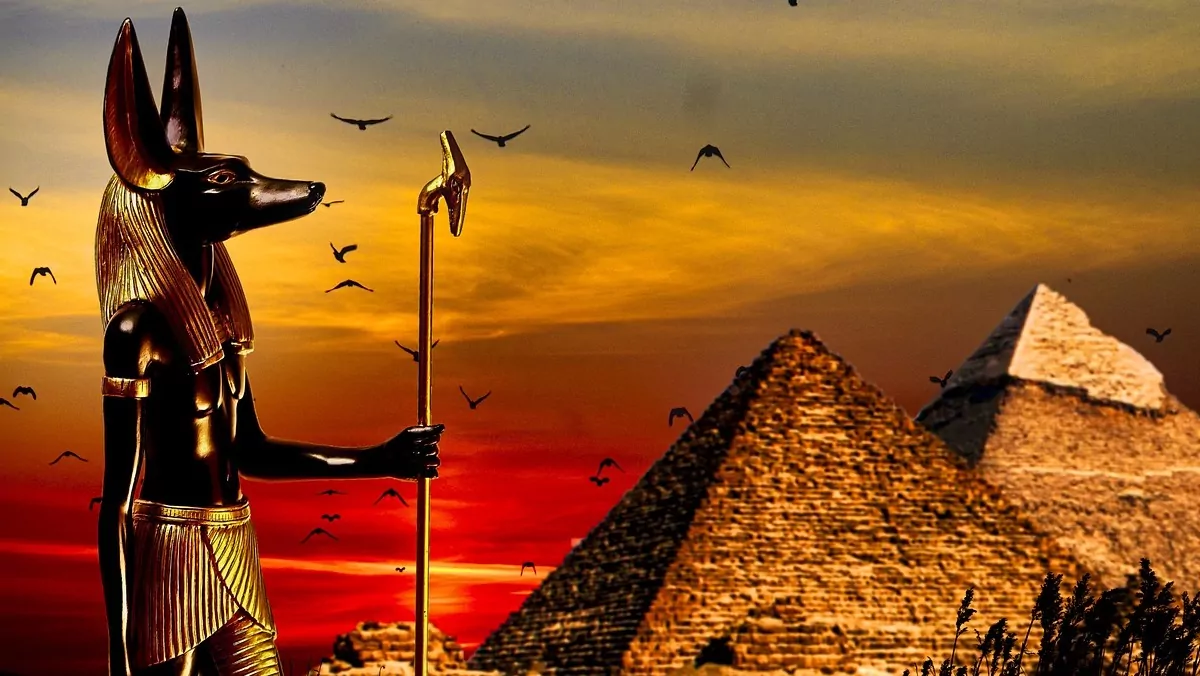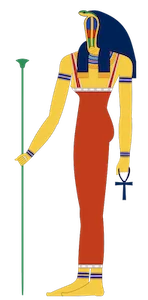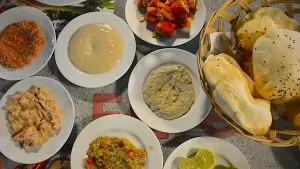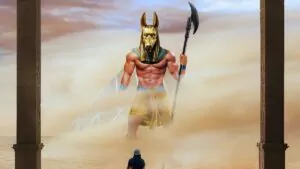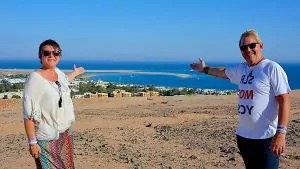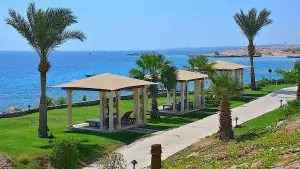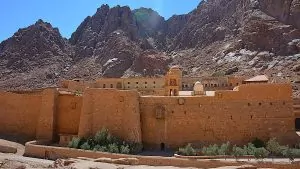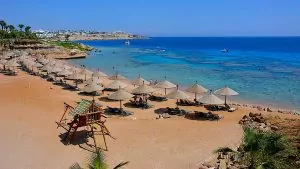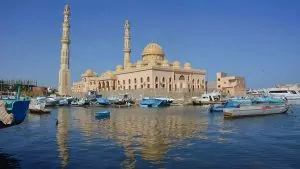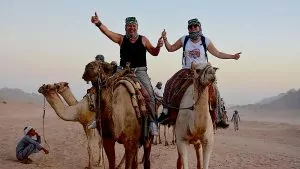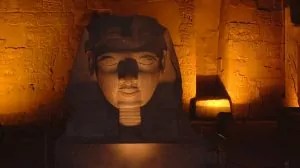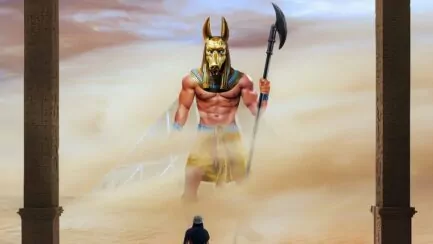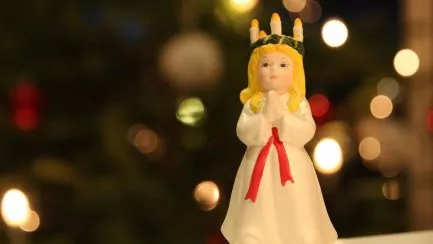Egyptian gods and goddesses offer ancient mysticism. The ancient Egyptians had a strong belief in these gods, who were believed to control everything from the sun and moon to love and war. Today, they whisper of times gone by, and they can still tickle the imagination ...
Innehållsförteckning
Egyptian gods and goddesses
We love history, and trying to imagine how people in the past lived - and thought - is both fascinating and imaginative. Egyptian gods and goddesses tell us a lot about the imaginary world of the ancient Egyptians, and when travelling and watching films, we have become hooked on reading about them.
We have visited Egypt three times and plan to go again to discover even more of its fascinating history. Now there is also the new museum in Cairo, which is the largest in Africa and where you can learn about all the historical events from Egypt. So, here is simply a long list of Egyptian gods and goddesses...
1. meretseger - cobra goddess
Meret victory (she who loves silence) was a cobra goddess in Egyptian mythology, usually depicted as a cobra-headed woman. She lived in the mountain above the Valley of the Kings and protected the tombs of the pharaohs and the people who built them. If anyone tried to raid the tombs, she was said to spit poison.
2. Bastet - goddess of fertility
The Egyptian goddess Bastet is originally a lion-headed goddess of war. She was worshipped as the protector of Lower Egypt, the sun and Pharaoh. Bastet was also the cat-headed goddess of dance, music, perfume, make-up, pleasure, song, festivity and sexuality.
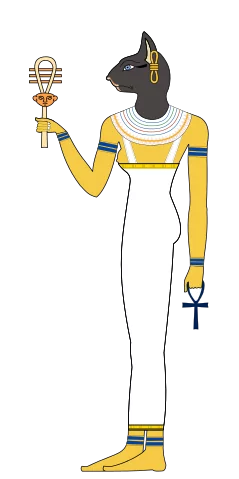
3. Ptah the All-God
Ptah was a god and husband of Sekhmet, father of Nefertum. These formed a triad of gods in Memphis, the ancient capital of Egypt. Apisturus was seen as the son or spirit of Ptah. He was considered to be a creator god who could create with his words, and later he also became an all-god. Ptah was the patron of craftsmen, especially sculptors.
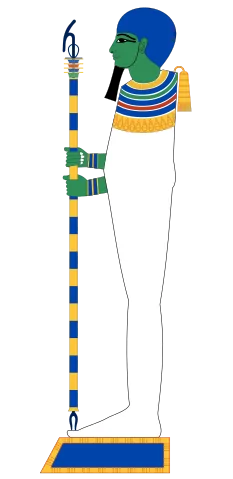
4. Sekhmet - wife of the god Ptah.
Sekhmetmeans 'the mighty one'. She was the wife of Ptah, daughter of Ra and mother of Nefertum, and played an important role in the story of how humanity almost perished after defying the gods. Together with the goddess Hathor, she punished humans on her father's behalf. Sekhmet was depicted as a woman with a lion's head and a sun disc on her head.
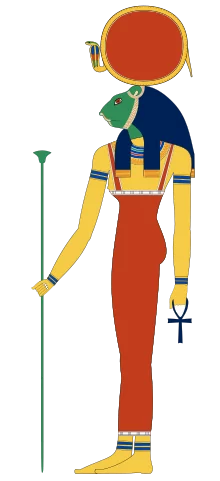
5. Nefertum - son of Ptah and Sekhmet
Nefertiti (Nefertum) was the son of Ptah and Sekhnet, and originally a lotus flower when the world came into being. Nefertem represented both the first sunlight and the scent of the lotus flower.
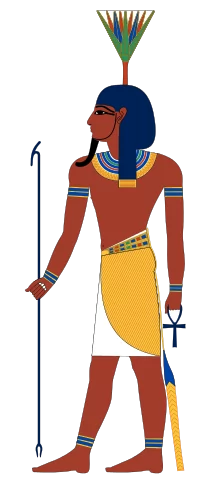
6. Ra - creator of the world
The sun god Ra (Re) was first worshipped in Heliopolis outside modern-day Cairo. Ra took his boat every day across the earth and up into the east, bringing heat to the earth, going down into the west but coming up again the next day. He was the god of the sun, order, kings and heaven.
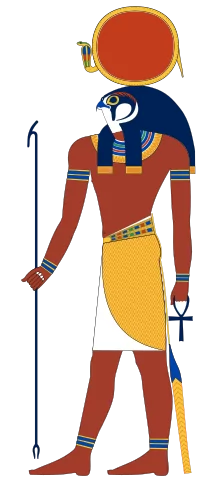
7. Hathor - wife of Ra
Hathor was a sky and mother goddess in Egyptian mythology. She was also a beautiful goddess of love. Hathor had a sun disc on her head and was depicted as a woman, cow or cow-headed woman. Hathor's husband was Ra and her son was Horus. Ra was not only Hathor's husband but also her father. The goddess Isis later took over the symbols of Hathor in the New Kingdom.
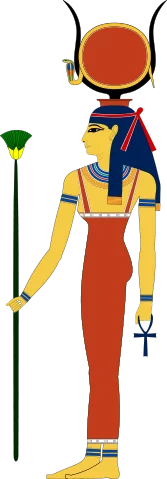
8. Horus - God of the Gods
Horus the god of gods and it was his will that all kings were supposed to obey, or be like. The kings were just messengers to make sure to maintain the balance of the universe and keep chaos away. Horus was an important and ancient Ancient Egyptian sky god. He was the foremost of the gods in the form of a falcon, and his eyes were the sun and the moon respectively. The name Horus means 'the distant one'.
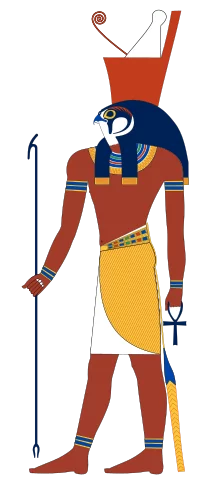
9. Amon Ra in the New Kingdom
When the dynasty united Egypt Amon was given high status in the new empire, and a number of other gods were combined with him, including the god Ra, who now became Amon-Ra.
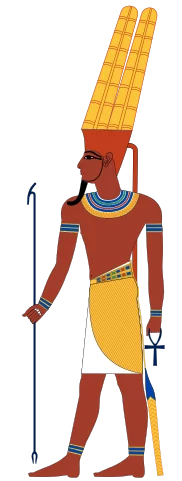
10. courage - wife of Amon-Ra
She was originally designed as a vulture, but as Amon's wife she took the form of a woman with a vulture in her headdress.
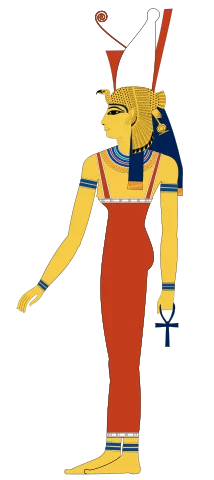
11. Khonsu - son of Amon-Ra and Mut
Khons or Khonsu was a moon god in the new kingdom and the role of the god of healing and life.
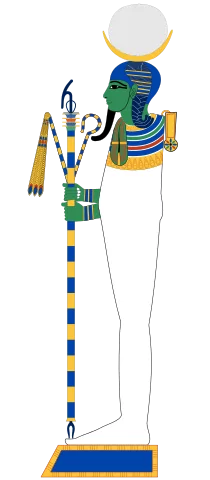
12. Isis - Mother of Horus and goddess of mothers
Isis was married to Osiris and Horus were their children. After the Greek and Roman conquest of Egypt, the cult of Isis spread throughout the Mediterranean, and the Temple of Isis is evidence in the Roman city of Pompeii where she was the protective mother goddess. When Christianity arrived, Isis and Horus on her lap were used as a model for the Christian cult of the Virgin Mary and the baby Jesus.
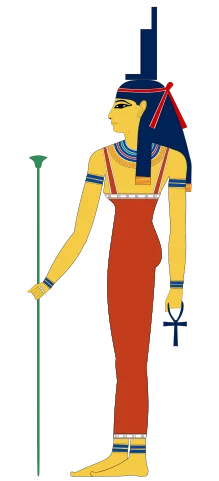
13. Osiris - king of the underworld of Duat
The god Osiris was believed to be the lord of the realm of the dead. He was the first mummy depicted in the Osiris myth and he personified rebirth and life after death.
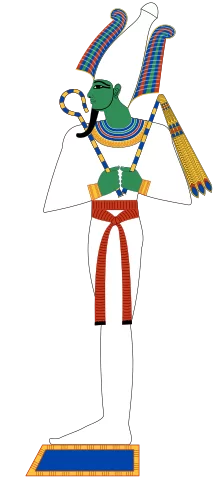
14. Seth - brother of Osiris and Isis
Seth was opposed to his brother Osiris and the rivalry between the brothers arose when their father divided Egypt between them, and Seth's envy eventually led him to murder his brother. The story of the conflict describes how Seth lured his brother into a lead coffin which he had thrown into the Nile and how Osiris' wife Isis is then chased by Seth.
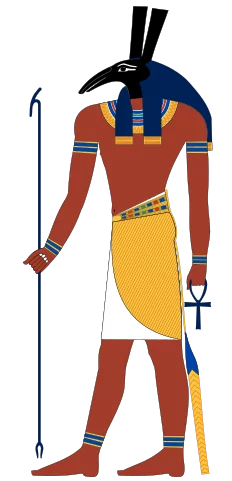
15. Nephthys - sister of Isis and wife of Seth
Neftys is with her sister Isis. linked to birth and funeral rites. Nephthys and Isis were also helpers when the sun was 'born on the eastern horizon'. Isis' consort Osiris fathered Nephthys' son, the jackal god Anubis.
Nephthys does not seem to have had her own cult and temples, but she often appears with Isis in pyramid texts and is also represented in the sanctuaries of other gods. Nephthys is depicted either as a woman, sometimes with outstretched falcon wings, or as a bird of prey.
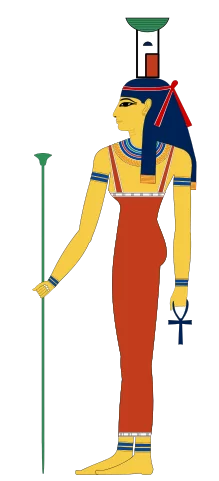
16. Anubis - son of Nephthys
Anubis is the man with a jackal head weighing hearts on scales and overseeing the embalming process of the deceased. The priests caring for the deceased often wore jackal masks on their faces when performing the 'mouth opening' ceremony to revive the mummy.
When the deceased would be sentenced by Osiris, the ruler of the underworld, the priests (Anubis) weighed the heart on one scale, and in the other scale bowl was the feather of truth. If the heart was too heavy, then the evil deeds outweighed the good, and the monster Ammit (the devourer) was always ready under the scale to eat the dead person. If the heart was lighter than the feather, the person had a good and happy life after death.
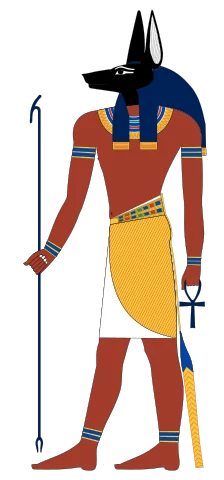
17. sobek
Sobek was the god of rivers and lakes and was depicted as a crocodile-headed man, and he was also associated with the sun and with Ra and Amun-ra.
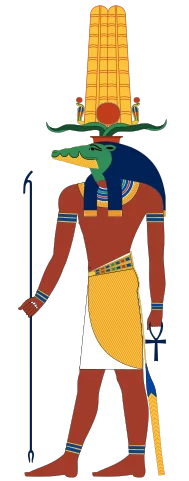
18. Ammit
The female demon who devoured the sinful souls not worthy to enter the kingdom of heaven. Ammit was a lion in the front, a hippopotamus in the back and a crocodile in the head. It lived under the soul wave in the underground Duat.
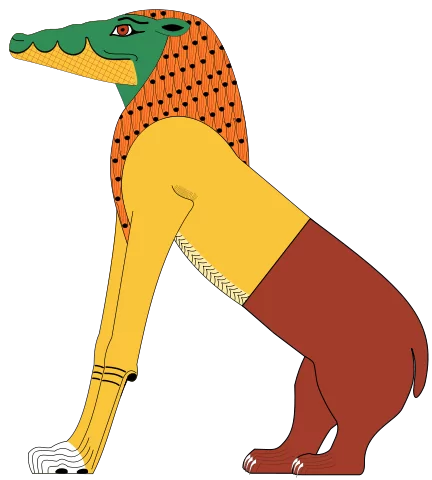
19. the bull god Apis
Tjurguden Apis was considered a revelation of the god Ptah. Apis represented the true form of life and was stabled in the temple of Ptah. The bull lived well and was very spoilt during its 25 years before being sacrificed for something younger. The dead bull was mourned by the people, mummified and given a ritual burial like many other bulls. There are lots of preserved bull mummies in huge sarcophagi in Egypt.
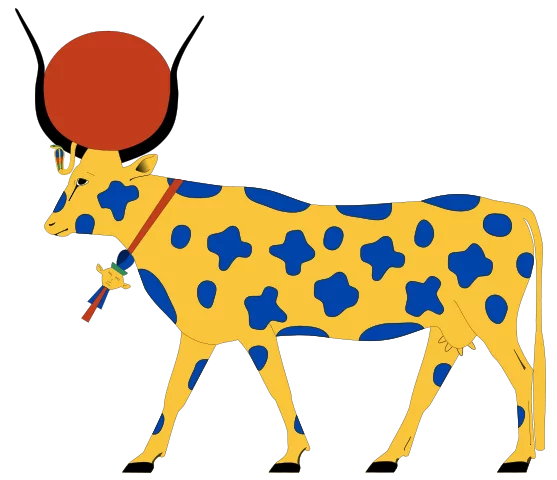
20. Thoth - divine messenger
Thoth took care of the writing and the notes the same wisdom. When the dead man was called to account, he took care of the judgement on human life. The art of writing was sacred and if you knew the art of hieroglyphics, you had high status as Thoth. He was often depicted with the head of the bird Ibis. He was the god of the moon, wisdom, writing, hieroglyphics, science, magic, art and judgement. His female counterpart was Seshat and his wife was Ma'at.
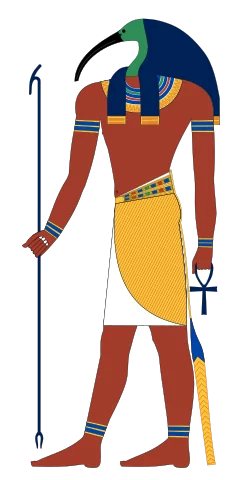
21. Ma'at - Truth, Justice, Order
Ma'at was the wife of Thoth and governed all ethics, politics and cosmic developments. She was the feather of truth, hence the headdress, and the goddess who weighed the souls of the deceased, and those burdened with sin were devoured by the wonder Ammit, while the others were admitted to the paradise of the god of death, Osiris.
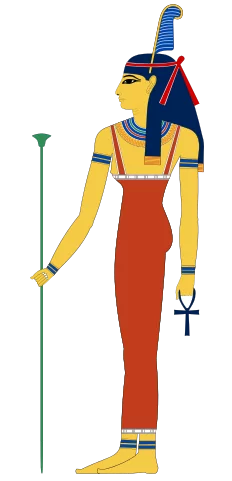
22. Seshat - the goddess of writing
Seshat was the goddess of wisdom, knowledge and writing. She was a scribe and was the inventor of writing. She was also attributed as the goddess of accounting, astronomy, mathematics, architecture, astronomy, building and surveying.
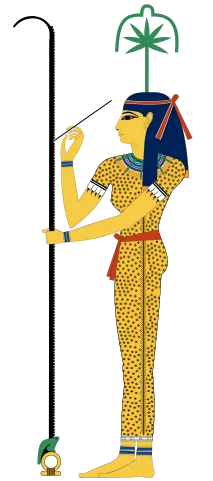
Are you fascinated by Egyptian gods and goddesses?
Are you fascinated by Egyptian gods and goddesses? Do you, like us, like to delve into history and ancient stories?
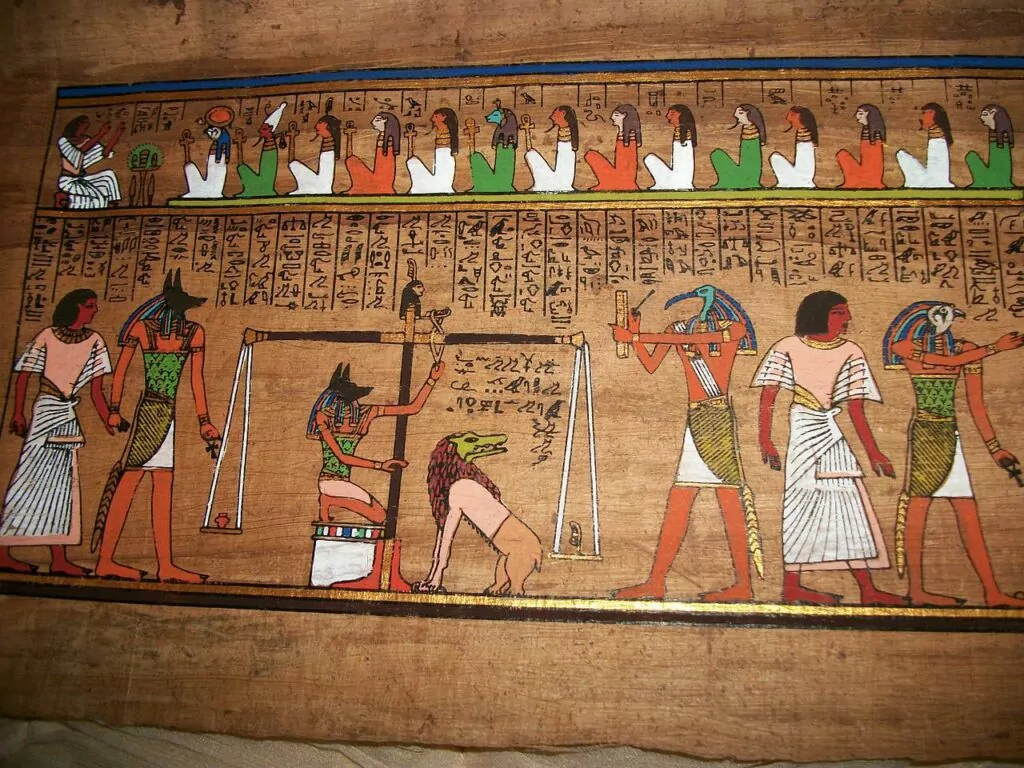
More reading on Egypt
Below you will find even more reading about Egypt.
El Gouna, Egypt - tips on hotels, beaches and excursions
El Gouna is an Egyptian holiday resort suitable for those who want to enjoy sun and...
Zeytouna beach island in El Gouna - Egyptian "beach island"
Zeytouna Beach Island is a small island in El Gouna, Egypt. You go here...
Two good hotels in Sharm el Sheikh - in different price ranges
We managed to stay in two good hotels in Sharm el Sheikh, in two...
Food in Egypt - and restaurants in Sharm el Sheikh
Food in Egypt - what comes to mind? We didn't have any particular preferences on the...
Facts about Egypt - 30 things you (might) not have known
Writing facts about Egypt is both fun and challenging because we are talking about over 5000...
Sharm el Sheikh in Egypt - 13 things to do
Sharm el Sheikh in Egypt is a tourist resort on the southern part of the...
Dahab on the Sinai Peninsula - day trip from Sharm el Sheikh
The small town of Dahab on Egypt's Sinai Peninsula is within easy travelling distance of Sharm el...
Hurghada Marina Boulevard - exclusive harbour promenade
If you're travelling to Hurghada in Egypt, don't miss the Hurghada Marina Boulevard. The marina...
Do you dare to travel to Egypt? - experiences from Sharm el Sheikh
Do you dare to travel to Egypt? We have received many different kinds of reactions both before and...
Snorkelling in Sharm el Sheikh, Egypt - a lovely boat trip
Now we have tried snorkelling in Sharm el Sheikh, in the Red Sea in Egypt....
Catherine's Monastery at Mount Sinai - where Moses received the commandments
St Catherine's Monastery on Mount Sinai in Egypt is a really old monastery with lots of...
10 great beaches in Sharm el Sheikh, Egypt
Beaches in Sharm el Sheikh in Egypt, what are they like? We visited a whole range of...
Hydra Seafood restaurant - great restaurant in El Gouna
If you are looking for a good restaurant in El Gouna, we can highly recommend a...
Flight from Stockholm to Hurghada - charter to El Gouna
Our trip by plane from Stockholm to Hurghada in Egypt went really well, and they...
Hurghada, Egypt - sun, sea and desert safaris
Hurghada, Egypt - our very first trip abroad together. Peter and I met...
What to do in Hurghada - 17 tips for activities and excursions
What to do in Hurghada, Egypt? We have visited Hurghada twice, including...
Snorkelling in the Red Sea - snorkelling tour in El Gouna
Snorkelling in the Red Sea can be a truly amazing experience with crystal clear waters and...
Shopping in El Gouna - by the Red Sea in Egypt
Yesterday we went shopping in El Gouna, Egypt. We decided to vary the...
Turkish bath in Sharm el Sheikh, Egypt
Now we have tried the Turkish bath in Sharm el Sheikh in Egypt. Interesting! We were...
Sultan Bey - cosy hotel in El Gouna, Egypt
We were really happy with our hotel in El Gouna, Egypt. Sultan Bey is...
Desert safari in Sharm el Sheikh by quad bike and camel
We had a fantastic day of desert safari in Sharm el Sheikh, Egypt. It...
Ras Mohammed National Park in Egypt
We have visited Ras Mohammed National Park in Egypt. Wow! You can travel here for...
Karnak and Luxor in Egypt - and a female pharaoh
On our trip to Egypt in 2005, we hadn't planned much more than sun...
